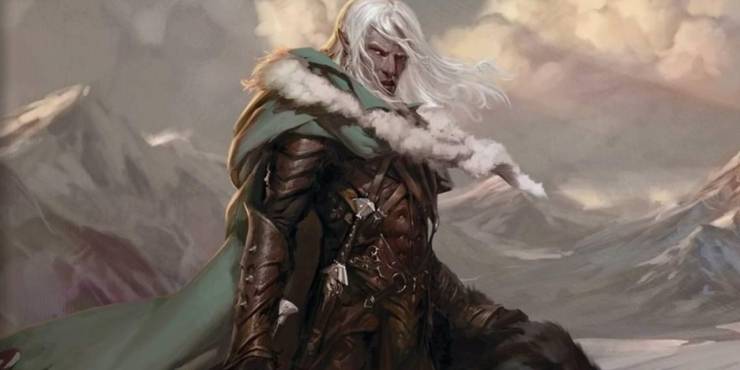Dungeons and Dragons is well-known for the wide variety of gameplay options it offers, but some of those options might seem less attractive than others. A specific ugly duckling for the fifth edition is D&D’s relatively weak Ranger class, but Wizards of the Coast’s Swarmkeeper subclass could potentially solve some of the Ranger’s problems.
As a whole, there actually isn’t much wrong with the Ranger: It provides great roleplaying opportunities and is similar to the Paladin, in that it is a half-spellcasting class. This means it gets less powerful spells than full magical classes like Wizard or Sorcerer, but it is also much more adept at non-magical combat, in return. Despite this similarity to the Paladin, though, Rangers in Dungeons & Dragons are often looked down on for being noticeably weaker than their comrades. This is often attributed to weak spells and poorly realized subclasses, which is why this edition of D&D has had a variety of updates for the class. Swarmkeeper is one of said updates and is still in the playtest state, which is why it can only be found in the Unearthed Arcana section of the official D&D site.
Swarmkeeper is a subclass of the Ranger that, as one can imagine, focuses on the abilities of swarms of creatures. This means its roleplay and combat style will typically be influenced by how swarms act and fight. Dungeons & Dragons is first and foremost a roleplaying game, after all, so if a character has studied bugs long enough to fight like one, it would only make sense that their personality might have picked up some buggy quirks, too. Besides possibly wondering about hives and oddly tight-knit communities, though, Swarmkeeper Rangers also have a very interesting battle style that, if played right, could even fix some of the class’ weak points.

Since many people who play Dungeons & Dragons want to be powerful adventurers, the Ranger class becomes somewhat overlooked. The Swarmkeeper subclass introduces some features that would make even the most avid min-maxer do a double-take, though. Besides a handful of decently powerful attack abilities, the reason Swarmkeeper is worth testing out is that it’s amazing at position-based combat. The subclass provides both excellent mobility options for players and the manipulation of an opponent’s mobility, which can greatly influence combat in D&D. If Rangers keep getting improvements in these areas, then they might just see a resurgence in popularity.
The best way to play Swarmkeeper in combat is to focus on its abilities that weaken and manipulate foes. Specifically, the ability Gathered Storm is a great early feature that increases a character’s damage and allows them to control opponent spacing, not even allowing for a save. This ability alone is surely something that’s a focus of D&D‘s testing, but the next ability, gained at level seven, might actually be the best combat ability in the Swarmkeeper’s arsenal. Writhing Tide focuses on mobility, primarily increasing the Ranger’s walk speed by 10, adding a climb speed equal to their walk speed, and even giving a low flying speed of 10. The reason this is so powerful is because it means Rangers are essentially only able to be attacked at range, which, as one can imagine from their name, is a good thing. This ability also allows Rangers to Disengage as a bonus action, which can let them utilize the Storm of Minions ability, blinding enemies and making it almost impossible for them to attack the at-range Ranger.
The Swarmkeeper subclass is still stuck in Unearthed Arcana, but that doesn’t mean it won’t ever become official. Before players speculate about another edition of Dungeons & Dragons, though, there are actually still a number of books being released for the current D&D edition that could easily contain the Swarmkeeper subclass. If it does become official, it’ll be interesting to see what changes get made to it based on results from playtesting. Hopefully many people will soon be committing espionage with their buggy comrades and fighting giant enemies with swarms of tiny friends. If not, then it’ll surely be interesting to see what else is done instead to improve fifth edition’s Ranger.
About The Author



